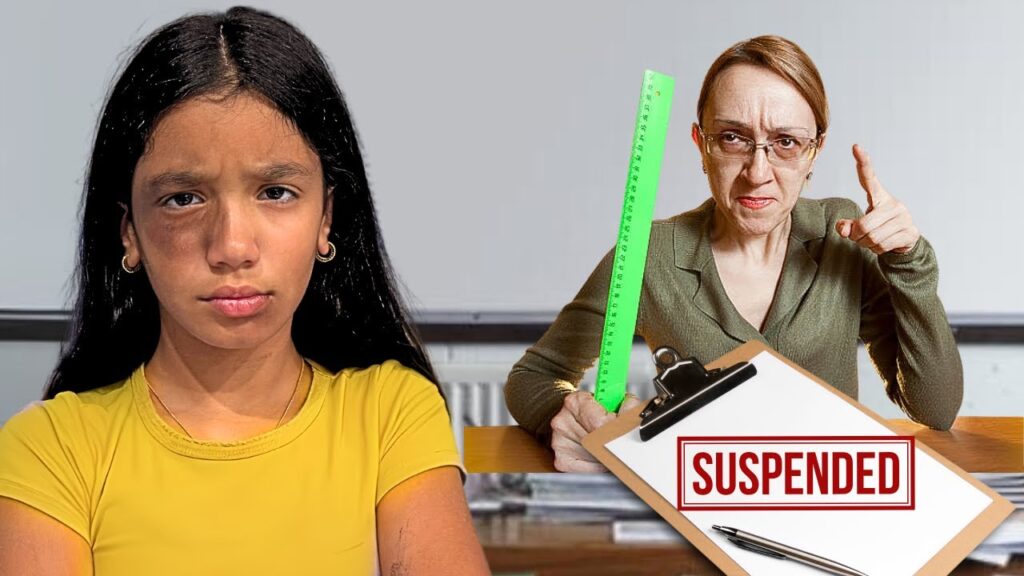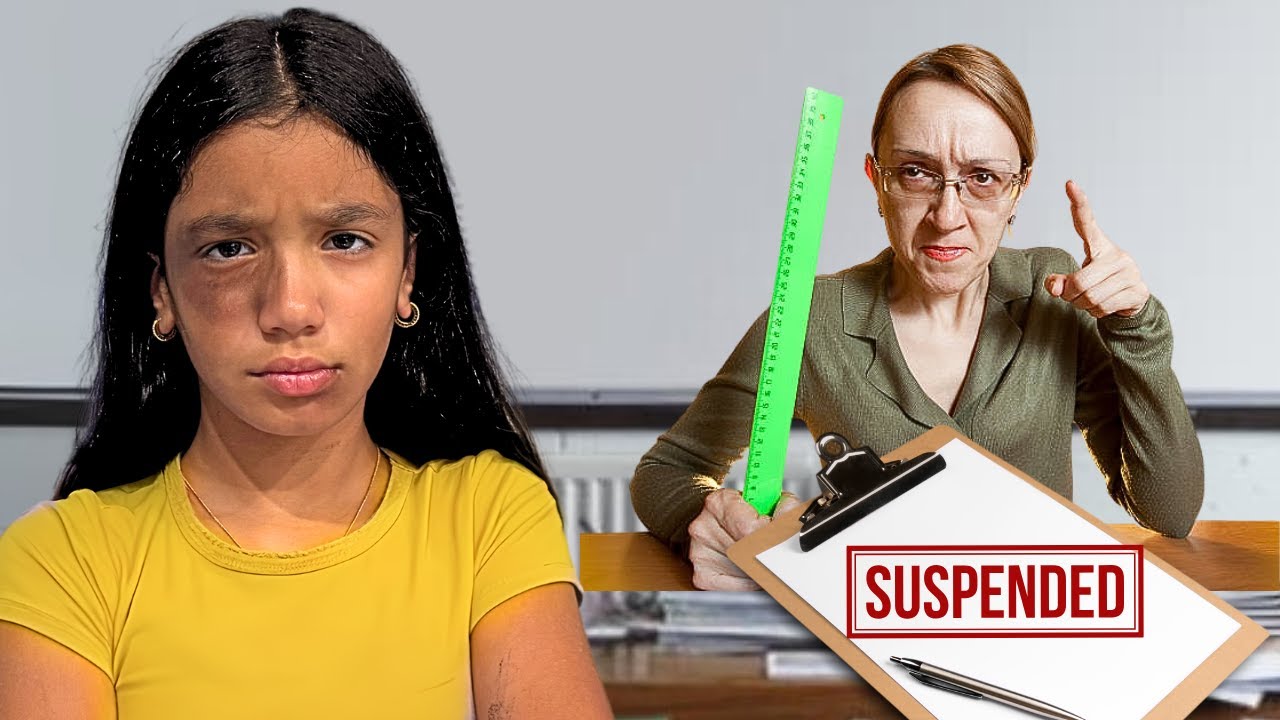
Navigating the Aftermath: Understanding School Suspension and Its Consequences
Being suspended from school is a serious matter, impacting a student’s academic progress, social life, and future opportunities. It’s crucial to understand the reasons behind a suspension from school, the potential consequences, and the steps a student and their family can take to address the situation effectively. This article aims to provide a comprehensive overview of school suspension, offering insights for students, parents, educators, and anyone seeking a better understanding of this complex issue. Dealing with a suspension from school requires a clear understanding of school policies, communication, and a proactive approach to addressing the underlying causes.
What is School Suspension?
School suspension is a disciplinary action that temporarily removes a student from the school environment. It’s typically imposed as a consequence for violating school rules or engaging in misconduct. There are two primary types of suspension: in-school suspension (ISS) and out-of-school suspension (OSS).
- In-School Suspension (ISS): The student remains at school but is isolated from their regular classes and activities. They may be required to complete assignments or engage in alternative educational activities under supervision.
- Out-of-School Suspension (OSS): The student is prohibited from attending school and participating in school-related activities for a specified period. They are typically required to remain at home under parental supervision.
Reasons for School Suspension
The reasons for suspension from school vary depending on the school’s policies and the severity of the offense. Common reasons include:
- Violation of School Rules: This can encompass a wide range of behaviors, such as dress code violations, tardiness, or unauthorized use of electronic devices.
- Disruptive Behavior: Actions that interfere with the learning environment, such as excessive talking, insubordination, or defiance of authority.
- Fighting and Physical Altercations: Engaging in physical violence or threats of violence against other students or staff.
- Bullying and Harassment: Repeatedly targeting another student with aggressive or intimidating behavior, including cyberbullying.
- Possession of Prohibited Items: Bringing weapons, drugs, alcohol, or other prohibited items onto school property.
- Theft or Vandalism: Stealing or damaging school property or the property of others.
- Academic Dishonesty: Cheating on tests, plagiarizing assignments, or engaging in other forms of academic misconduct.
Consequences of School Suspension
A suspension from school can have significant consequences for a student, both academically and socially. These consequences may include:
- Academic Setbacks: Missing class time can lead to falling behind in coursework, reduced grades, and difficulty catching up.
- Social Isolation: Being removed from the school environment can disrupt social connections and lead to feelings of isolation and alienation.
- Increased Risk of Dropping Out: Studies have shown that students who are suspended from school are more likely to drop out.
- Negative Impact on College Applications: A history of suspensions can negatively impact a student’s chances of being accepted into college.
- Legal Consequences: In some cases, serious offenses that lead to suspension may also result in legal charges.
The Suspension Process
The process for suspension from school typically involves the following steps:
- Investigation: School officials will investigate the incident to determine what happened and whether a violation of school rules occurred.
- Notification: The student and their parents will be notified of the suspension and the reasons for it.
- Hearing: In some cases, a hearing may be held to allow the student to present their side of the story and challenge the suspension.
- Appeal: The student or their parents may have the right to appeal the suspension decision.
- Re-entry Meeting: After the suspension period, a meeting may be held to discuss the student’s return to school and any conditions that must be met.
What to Do If Your Child is Suspended from School
If your child is suspended from school, it’s important to take the following steps:
- Stay Calm: It’s natural to feel upset or angry, but try to remain calm and objective.
- Gather Information: Talk to your child and school officials to understand the reasons for the suspension.
- Review School Policies: Familiarize yourself with the school’s policies regarding suspension and disciplinary procedures.
- Attend Meetings: Attend any meetings or hearings scheduled by the school.
- Advocate for Your Child: If you believe the suspension is unfair or unwarranted, advocate for your child’s rights.
- Address the Underlying Issues: Work with your child and school officials to address the underlying issues that led to the suspension.
- Seek Support: Consider seeking support from a counselor, therapist, or other professional.
Alternatives to Suspension
Many schools are exploring alternatives to suspension from school, recognizing that suspension can be counterproductive and may not address the root causes of misbehavior. These alternatives may include:
- Restorative Justice: A process that focuses on repairing harm and building relationships between the offender and the victim.
- Conflict Resolution: Mediation or other techniques to help students resolve conflicts peacefully.
- Counseling and Support Services: Providing students with access to counseling, therapy, and other support services.
- Behavioral Interventions: Implementing strategies to address specific behavioral problems.
- Parent Involvement: Working closely with parents to address their child’s behavior.
The Role of School Policies
School policies play a crucial role in defining acceptable behavior and outlining the consequences for violating school rules. It’s important for schools to have clear, consistent, and fair disciplinary policies that are communicated effectively to students and parents. These policies should also be reviewed regularly to ensure they are aligned with best practices and address the evolving needs of the school community. Understanding the school’s policies regarding suspension from school is vital for both students and parents.
The Impact on Students with Disabilities
Students with disabilities are disproportionately suspended from school compared to their non-disabled peers. This is often due to behaviors that are related to their disability. It’s important for schools to consider the student’s disability when determining disciplinary actions and to provide appropriate accommodations and supports. The Individuals with Disabilities Education Act (IDEA) provides specific protections for students with disabilities who are facing suspension or expulsion. [See also: IDEA and Student Discipline]
Preventing School Suspension
The best way to address school suspension is to prevent it from happening in the first place. This requires a collaborative effort from students, parents, educators, and the community. Strategies for preventing school suspension include:
- Creating a Positive School Climate: Fostering a supportive and inclusive school environment where students feel safe and respected.
- Promoting Positive Behavior: Teaching students positive social and emotional skills.
- Early Intervention: Identifying and addressing behavioral problems early on.
- Parent Involvement: Engaging parents in their child’s education and behavior management.
- Community Partnerships: Collaborating with community organizations to provide support services for students and families.
The Long-Term Effects of Suspension
The long-term effects of suspension from school can be significant, impacting a student’s academic achievement, social development, and future opportunities. Repeated suspensions can lead to a cycle of disengagement and failure, increasing the risk of dropping out, involvement in the juvenile justice system, and other negative outcomes. It is important to address the root causes of behavior that leads to suspension from school to mitigate these long-term effects.
Suspension vs. Expulsion
It’s important to distinguish between suspension and expulsion. While both are disciplinary actions, expulsion is a more severe consequence. Expulsion involves the permanent removal of a student from school. It is typically reserved for serious offenses that pose a significant threat to the safety and well-being of the school community. A suspension from school is a temporary removal, while expulsion is permanent. [See also: Understanding School Expulsion Policies]
The Importance of Communication
Open and honest communication is essential throughout the suspension process. Students, parents, and school officials should communicate effectively to understand the reasons for the suspension, address any concerns, and develop a plan for the student’s return to school. This communication should be respectful, empathetic, and focused on finding solutions. Navigating a suspension from school requires clear and consistent communication channels.
Conclusion
Suspension from school is a complex issue with significant consequences for students, families, and the school community. By understanding the reasons for suspension, the potential consequences, and the steps that can be taken to address the situation effectively, we can work together to create a more supportive and equitable school environment where all students have the opportunity to succeed. Addressing the underlying causes that lead to a suspension from school is crucial for long-term success. It’s important to remember that a suspension from school is not the end; it’s an opportunity to learn, grow, and make positive changes.

